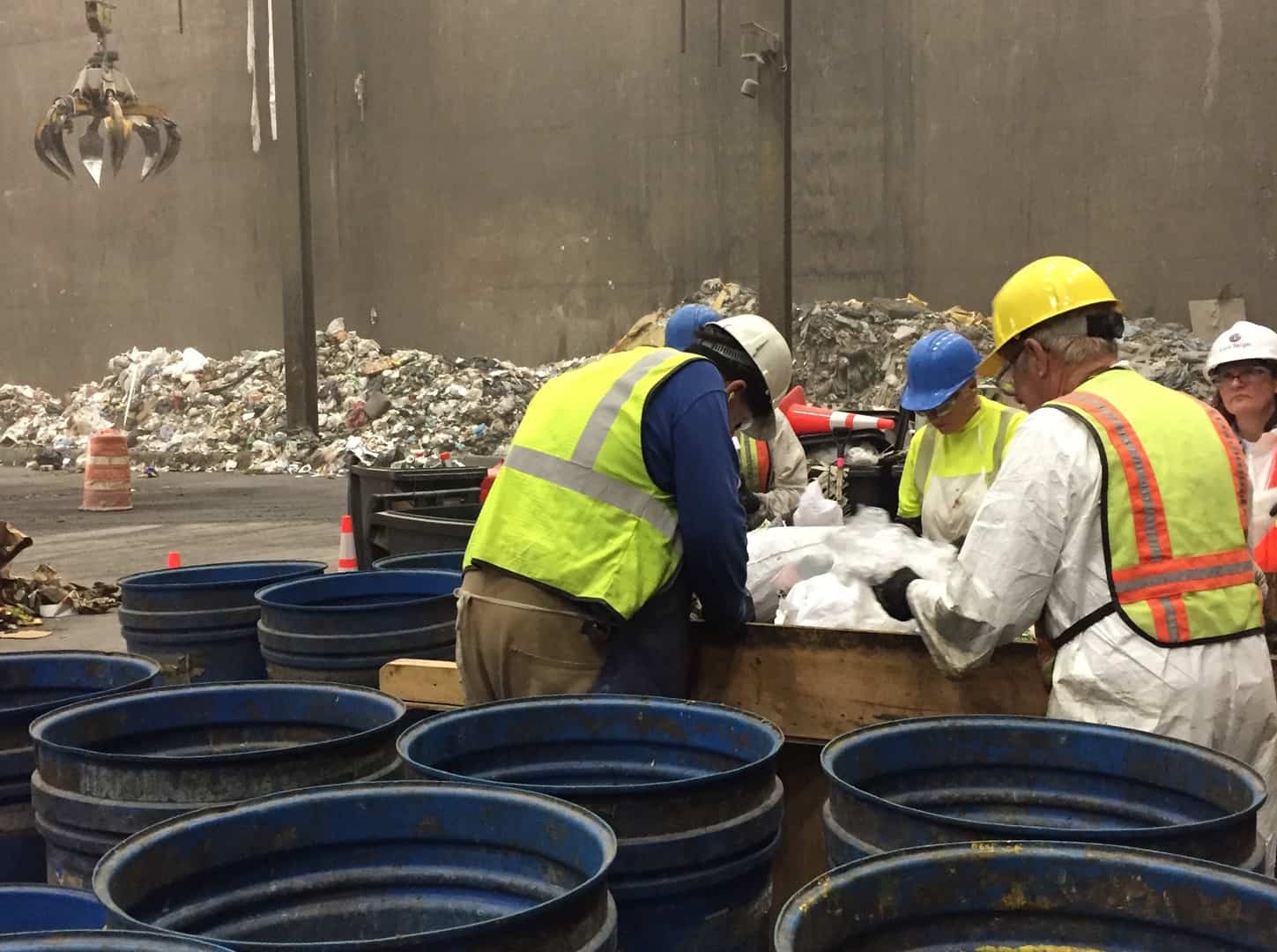
Waste watchdogs
By SARAH MCKENZIE : The Journal : MAY 12, 2016 (UPDATED: MAY 17, 2016 – 9:09 AM)
As a massive pile of garbage loomed in the background, crews picked through the trash at the Hennepin Energy Recovery Center (HERC) in the North Loop on Thursday as part of a new pilot project designed to study residents’ habits in hopes of finding ways to increase recycling.
It’s a smelly job, but hopefully an illuminating one.
Samples from garbage collected from a cross-section of Minneapolis hauled to the HERC are sorted into more than 50 categories, said Ben Knudson, a county recycling specialist. The study will examine trends in different neighborhoods to help improve recycling education and hopefully divert more items from the waste stream.
As part of a second sort, the county is analyzing waste by retail categories — trying to determine where the garbage would be found in a store like Target.
“Part of that is to learn more about where the waste is created and learn more about consumer habits — where people are buying it,” he said. “People do a pretty good job of recycling items in the kitchen. We find that sometimes people forget about the laundry room, the bathroom and things coming out of the garage.”
Hennepin County’s recycling rate was 43 percent in 2015 — just shy of its goal of 45 percent, according to its new recycling progress report. The recycling rate in 2010 was 38 percent.
It has set an ambitious goal of a 75 percent recycling rate by 2030.
More plastic is ending up in the waste stream, according to the report. The material causes a lot of confusion when it comes to recycling. Plastic beverage bottles, for instance, can be recycled, but plastic bags and plastic films can’t be recycled in curbside programs. Drop-off programs for plastic bags, however, are available at many retailers.
The Minneapolis City Council voted in April to ban retailers from offering customers single-use plastic bags. Instead, retailers are required to offer recyclable paper, compostable or reusable bags for 5 cents as part of the “Bring Your Own Bag” ordinance. The ordinance will go into effect June 1, 2017.
Paul Kroening, a supervisor in the county’s Waste Reduction and Recycling Unit, said paper, such as cardboard boxes, that could be recycled still ends up in the waste stream, along with food and plastic items found in the house outside the kitchen.
The county’s organics recycling rate was 3 percent in 2015.
Minneapolis is among about a dozen cities in the county with organics recycling programs. As of early May, nearly 35 percent of Minneapolis recycling customers had signed up for the city’s new organics recycling program.
About 15,617 households in the county participate in an organics recycling program — only about 4 percent of households in the county.
“We have 43 cities in all in Hennepin County overall so we have a ways to go,” Kroening said.
A little over half of the trash generated in the county is from businesses and organizations. As of Jan. 1, most commercial buildings in Hennepin County are required to recycle under state law. The county has started offering grants to businesses and nonprofits to help launch recycling programs, including for organics.
The HERC burns about 1,000 tons of waste a day, Kroening said.
When asked about concerns about the environmental impact of the HERC on its neighbors, Kroening said people shouldn’t be worried.
“There are definitely some air emissions, but they are very minor. They should be more worried about the cars going by their house on a daily basis because that has a lot higher impact on air quality,” he said.
Waste generation per capita in the county has decreased by 20 percent since 2007.
About 1.35 million tons of solid waste was generated in the county in 2015 and 82 percent of it was diverted from landfills through recycling, composting, a reuse program or by incineration at the HERC.
>>
Top 10 most common materials in household trash
- Food: 20 percent
- Yard waste: 8 percent
- Textiles and leather: 7 percent
- Compostable paper: 6 percent
- Plastic wrap and film: 5 percent
- Construction and remodeling debris: 4 percent
- Carpet and padding: 4 percent
- Diapers and sanitary items: 3 percent
- Bulky items, such as mattresses and furniture: 3 percent
- Non-recyclable paper: 3 percent
(Source: Ramsey/Washington residential waste composition study, 2014)


